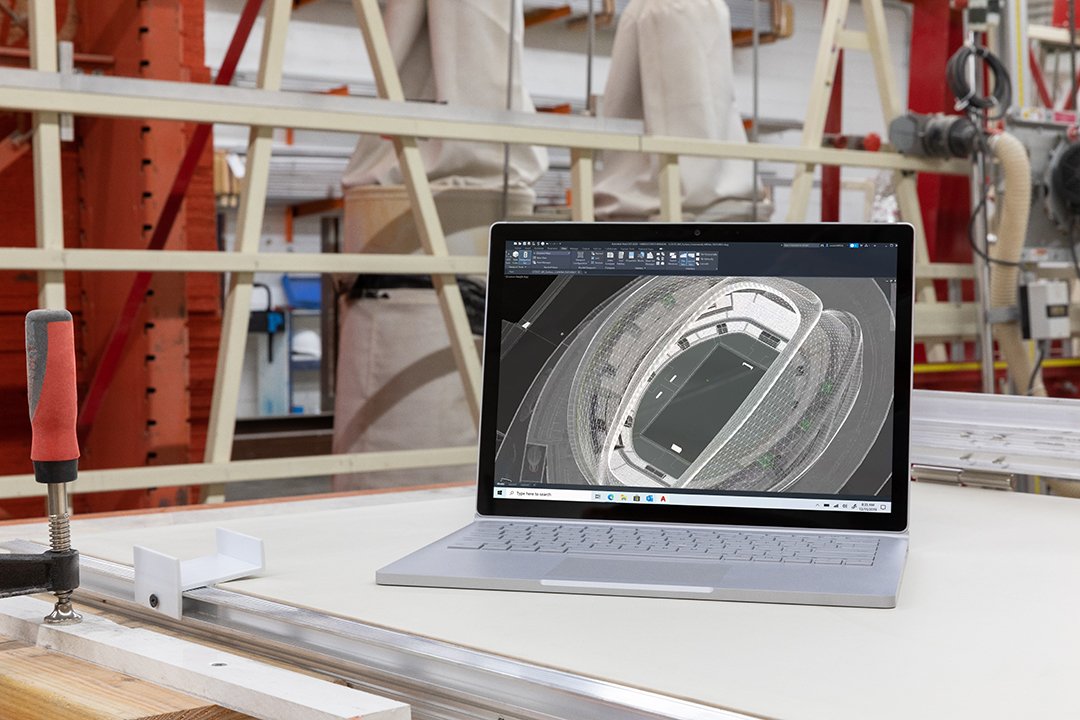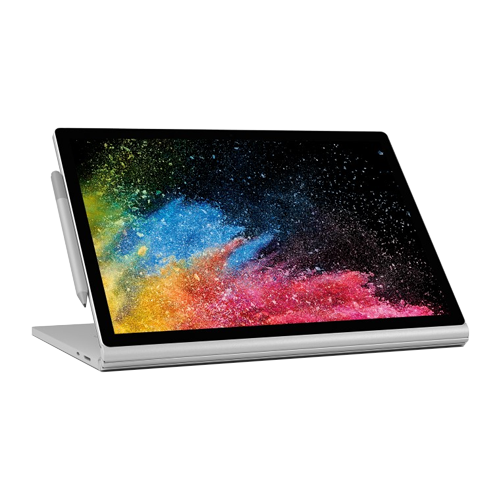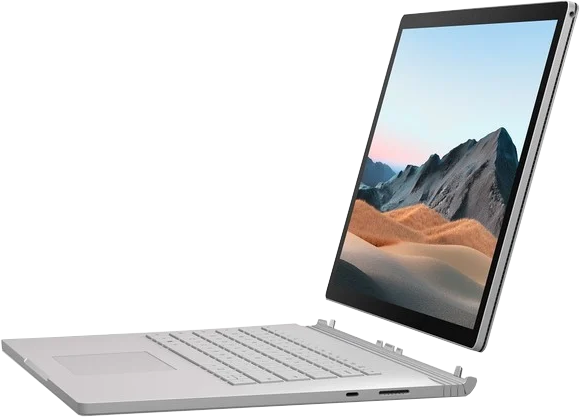Surface Book 2 vs. Surface Book 3: Which is a better buy?


Classic Value
The Surface Book 2 is an excellent PC. While it rocks slower graphics, processors, RAM, storage, and Wi-Fi, you've got quite the compelling 2-in-1 PC if you're looking for something special on a budget.
Pros
- More affordable
- Better value
- Same gorgeous design
- Still a solid 2-in-1 PC
Cons
- Older Intel CPUs
- Slower NVIDIA GPUs
- Wi-Fi 5
- Less battery life
The choice between Surface Book 2 and Surface Book 3 primarily comes down to your available budget. The bump in specs is nice for those seeking a new, powerful PC with the latest from Intel and NVIDIA, but if you simply need a decently powered 2-in-1 Windows PC from Microsoft, the Surface Book 2 is still worth considering.
The display remains the same, so do the ports and webcams. In fact, there are more things the same than different with the Surface Book 3. But where there are improvements, they're considerable, making it one compelling portable PC.
Surface Book 2 vs. Surface Book 3 specs
| Header Cell - Column 0 | Surface Book 2 (13.5) | Surface Book 3 (13.5) |
|---|---|---|
| Processor | 7th Gen Intel Core i5-7300U 8th Gen Intel Core i7-8650U | 10th Gen Intel i5-1035G7 10th Gen Intel Core i7-1065G7 |
| RAM | 8GB LPDDR3 16GB LPDDR3 | 8GB LPDDR4x 16GB LPDDR4x 32GB LPDDR4x |
| Storage | 256GB 512GB 1TB | 256GB 512GB 1TB |
| Display size | 13.5 inches Touch | 13.5 inches Touch |
| Display resolution | 3000 x 2000 3:2 aspect 267 PPI | 3000 x 2000 3:2 aspect 267 PPI |
| Graphics | Intel UHD Graphics 620 NVIDIA GeForce GTX 1050 | Intel Iris Plus GeForce GTX 1650 (Max-Q) |
| Ports | Two USB Type-A 3.1 (Gen1) One USB Type-C w/ video, power in/out and USB 3.1 (Gen1) data Full-size SDXC card reader (UHS-II) Headphone jack (3.5mm) Two Surface Connect ports (1 in tablet, 1 in keyboard base) | Two USB Type-A 3.1 (Gen1) One USB Type-C w/ video, power in/out and USB 3.1 (Gen1) data Full-size SDXC card reader (UHS-II) Headphone jack (3.5mm) Two Surface Connect ports (1 in tablet, 1 in keyboard base) |
| Connectivity | Marvel Wi-Fi 802.11 a/b/g/n/ac Bluetooth 4.1 Xbox Wireless | Intel Wi-Fi 6 802.11ax Bluetooth 5.0 Xbox Wireless |
| Camera | 5MP Front-facing 1080P 8.0MP Rear-facing AF 1080P | 5MP Front-facing 1080P 8.0MP Rear-facing AF 1080P |
| Biometrics | IR camera | IR camera |
| Battery | 70WHr Up to 17 hours | 70WHr Up to 17.5 hours |
| Charger | 39W (Core i5) 95W (Core i7) | 65W (Core i5) 102W (Core i7) |
| Dimensions | 343 mm x 251 mm x 15-23 mm (L x W x D) 13.5 in x 9.87 in x 0.57 to 0.90 in | 343 mm x 251 mm x 15-23 mm (L x W x D) 13.5 in x 9.87 in x 0.57 to 0.90 in |
| Weight | Total: 1,905 g (4.20 lbs) Tablet: 817 g (1.80 lbs) | Total: 1,905 g (4.20 lbs) Tablet: 817 g (1.80 lbs) |
| Header Cell - Column 0 | Surface Book 2 (15) | Surface Book 3 (15) |
|---|---|---|
| Processor | 8th Gen Intel Core i7-8650U | 10th Gen Intel Core i7-1065G7 |
| RAM | 8GB LPDDR3 16GB LPDDR3 | 8GB LPDDR4x 16GB LPDDR4x 32GB LPDDR4x |
| Storage | 256GB 512GB 1TB | 256GB 512GB 1TB 2TB |
| Display size | 15 inches Touch | 15 inches Touch |
| Display resolution | 3240 x 2160 3:2 aspect 260 PPI | 3240 x 2160 3:2 aspect 260 PPI |
| Graphics | Intel UHD Graphics 620 NVIDIA GeForce GTX 1060 | Intel Iris Plus GeForce GTX 1660 Ti (Max-Q) NVIDIA Quadro RTX 3000 |
| Ports | Two USB Type-A 3.1 (Gen1) One USB Type-C w/ video, power in/out and USB 3.1 (Gen1) data Full-size SDXC card reader (UHS-II) Headphone jack (3.5mm) Two Surface Connect ports (1 in tablet, 1 in keyboard base) | Two USB Type-A 3.1 (Gen1) One USB Type-C w/ video, power in/out and USB 3.1 (Gen1) data Full-size SDXC card reader (UHS-II) Headphone jack (3.5mm) Two Surface Connect ports (1 in tablet, 1 in keyboard base) |
| Connectivity | Marvel Wi-Fi 802.11 a/b/g/n/ac Bluetooth 4.1 Xbox Wireless | Intel Wi-Fi 6 802.11ax Bluetooth 5.0 Xbox Wireless |
| Camera | 5MP Front-facing 1080P 8.0MP Rear-facing AF 1080P | 5MP Front-facing 1080P 8.0MP Rear-facing AF 1080P |
| Biometrics | IR camera | IR camera |
| Battery | 80WHr Up to 17 hours | 80WHr Up to 17.5 hours |
| Charger | 102W | 127W |
| Dimensions | 343 mm x 251 mm x 15-23 mm (L x W x D) 13.5 in x 9.87 in x 0.57 to 0.90 in | 343 mm x 251 mm x 15-23 mm (L x W x D) 13.5 in x 9.87 in x 0.57 to 0.90 in |
| Weight | i5 total: 1,533g (3.38lbs) i7 total: 1,642g (3.62lbs) Tablet: 719g (1.59lbs) | i5 total: 1,533g (3.38lbs) i7 total: 1,642g (3.62lbs) Tablet: 719g (1.59lbs) |
New internals for the same excellent Surface Book
Externally, nothing changed with the move from Surface Book 2 to Surface Book 3. If you put one of each side by side, you'd be hard-pressed to tell any visual difference. It's all about what's under the hood, which is where the considerable price difference comes into play.
The newer Surface Book 3 is updated for 2020, though there are some omissions like Thunderbolt 3. For CPUs, we've got the choice of up to a 10th Gen Intel Core i7-1065G7, a very capable mobile processor used in many modern Ultrabooks.
GPUs were also given a bump with the 15-inch able to take on a GTX 1660 Ti with 6GB GDDR6 RAM. It's powerful, clocking in a 40% performance boost over the Surface Book's GTX 1060. There's even an NVIDIA Quadro RTX 3000 GPU option for creatives and professionals.
Next up is Wi-Fi, which is now Wi-Fi 6, and thanks to Microsoft switching to Intel for wireless connectivity, we also have Bluetooth 5.0. And, of course, Microsoft included Xbox Wireless. Finally, we have RAM and SSD improvements. Surface Book 3 swaps out the slower DDR3 RAM for LPDDR4x. SSD performance has also been bumped.
Overall, the Surface Book 3 is essentially a Surface Book 2 with everything turned up to 11. If you dig the Surface Book design and don't want it to change, this new generation will please you. But if you're holding out for a design refresh, you're going to have to wait a little longer.
All the latest news, reviews, and guides for Windows and Xbox diehards.
Surface Book 2 is better for tighter budgets
If you simply do not have enough funds to splash out on the Surface Book 3, but still desire a Surface Book of your own, the Surface Book 2 is still a good buy. It can be configured with an 8th Gen Intel Core-i7 CPU, 16GB of RAM, 1TB SSD, and an NVIDIA GTX 1050 GPU.
Surface Book 3 is the star pick with better internal hardware
If you want the absolute best Surface Book, there's only one choice. Surface Book 3 has better internal components, is newer, and has support for Wi-Fi 6 and Bluetooth 5.0. It's just a shame that Microsoft couldn't evolve the external design a little.

Rich Edmonds was formerly a Senior Editor of PC hardware at Windows Central, covering everything related to PC components and NAS. He's been involved in technology for more than a decade and knows a thing or two about the magic inside a PC chassis. You can follow him on Twitter at @RichEdmonds.


